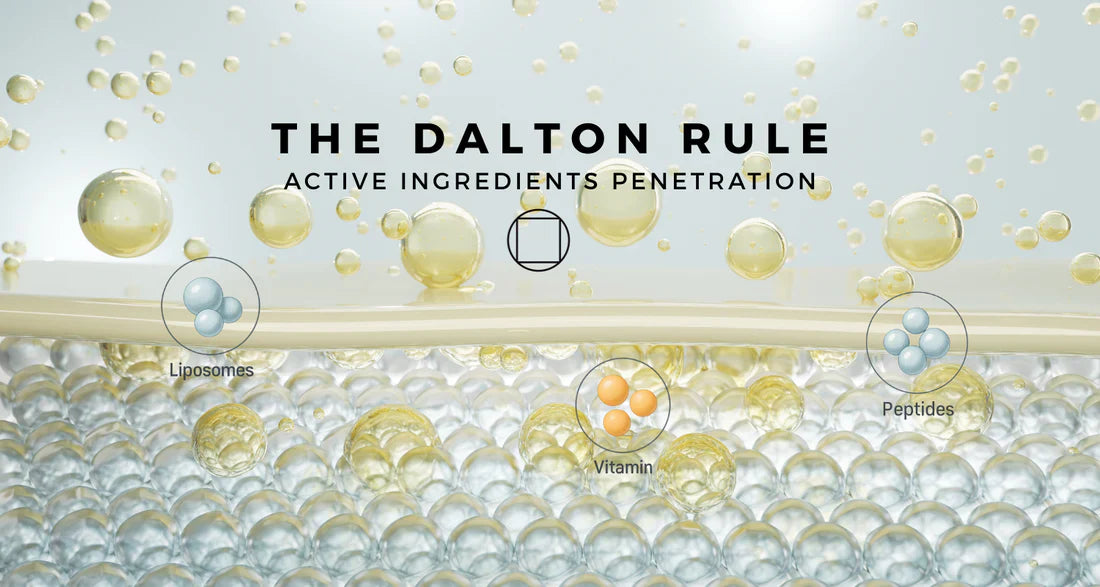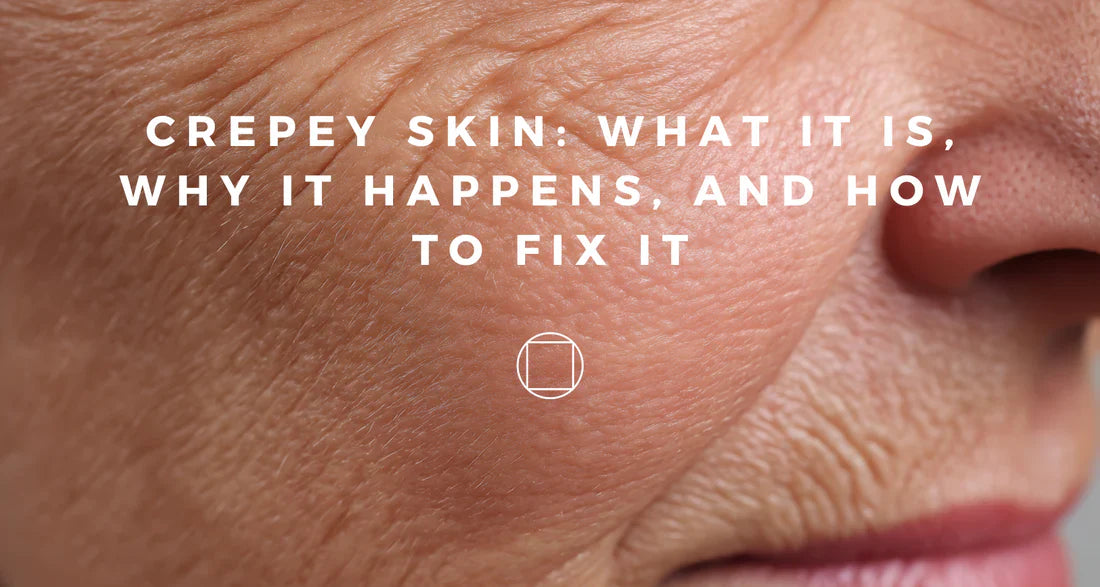
Beyond the 500 Dalton Rule: Key Considerations for Ingredient Penetration in Skincare Formulations
The 500 Dalton Rule is widely referenced in dermatology and cosmetic science as a general guideline for transdermal delivery. It suggests that molecules with a molecular weight under 500 Daltons are more likely to penetrate the stratum corneum via passive diffusion. However, relying solely on this rule oversimplifies the complex mechanisms governing ingredient absorption.
In product development and professional skincare, it's essential to consider multiple physiological, chemical, and formulation-related factors that influence dermal penetration—especially when optimizing efficacy in targeted treatments.
Revisiting the 500 Dalton Threshold
The stratum corneum, the skin’s outermost barrier, presents a formidable obstacle to molecular penetration. Passive diffusion is favored for small, non-polar, and uncharged molecules, aligning with the Dalton threshold. Yet, many actives of clinical interest exceed this limit.
For esthetic applications and cosmeceutical development, understanding how to bypass or modulate the barrier is crucial—particularly for larger actives such as peptides, lipophilic vitamins, and botanical extracts.
Key Factors That Enhance Penetration
1. Lipophilicity and the Skin’s Lipid Matrix
The stratum corneum's intercellular space is lipid-rich, favoring the diffusion of oil-soluble substances. An optimal partition coefficient (logP) allows ingredients to integrate into this matrix efficiently.
Ingredients with balanced hydrophilic-lipophilic properties are more likely to traverse the barrier, especially when embedded in compatible carriers like esters, fatty acids, or squalane.
2. Ionization and pH Compatibility
The degree of ionization of an active—determined by its pKa and the pH of the formulation—directly affects its permeability. Uncharged molecules tend to diffuse more readily through the lipophilic layers. Adjusting formulation pH to optimize the unionized fraction of actives is a strategic approach in professional skincare.
3. Formulation Techniques and Penetration Enhancers
Penetration enhancers disrupt the stratum corneum or increase solubility of actives. Commonly used enhancers include:
-
Short-chain alcohols (e.g., ethanol)
-
Fatty acids and esters
-
Surfactants
-
Certain glycols and terpenes
These are used judiciously to maintain skin integrity while improving delivery.
4. Delivery Systems
Advanced systems significantly improve the bioavailability of actives. These include:
-
Liposomes: Phospholipid bilayer vesicles ideal for encapsulating both hydrophilic and lipophilic compounds.
-
Nanoemulsions: Stabilized oil-in-water or water-in-oil systems that enhance solubilization and penetration.
-
Micellar systems: Useful for solubilizing and transporting lipophilic substances within hydrophilic environments.
These systems protect actives from degradation and enhance penetration through follicular pathways or intercellular diffusion.
Structural and Molecular Considerations
Molecular Flexibility and Shape
Penetration is not solely dictated by size; molecular flexibility and shape also affect how an ingredient interacts with the skin’s structure. Rigid or bulky molecules may have limited mobility despite being under 500 Daltons.
Biosimilarity and Receptor Mediation
Actives structurally analogous to endogenous compounds may benefit from receptor-mediated uptake or specific transport mechanisms. This is particularly relevant for:
-
Vitamin derivatives
-
Peptides
-
Steroidal compounds
For instance, retinoids and certain fat-soluble vitamins (A, D, E, K) can penetrate effectively due to both lipophilicity and biological recognition pathways.
Application in Extracts and Botanical Actives
Botanical extracts contain a heterogeneous mix of molecules. While small phenolic antioxidants penetrate efficiently, larger polysaccharides and proteins often remain superficial. However, these macromolecules may provide surface-level benefits—hydration, anti-inflammatory effects, barrier support—even without transdermal penetration.
Formulation synergy plays a critical role: smaller, absorbable components may enhance the effects of non-penetrating compounds, contributing to overall efficacy.
Strategic Formulation: A Professional Imperative
For professionals and product developers, effective skincare is not solely about maximizing penetration—but about targeted delivery, skin compatibility, and functional bioavailability. Understanding how ingredient characteristics, delivery technologies, and skin physiology interact enables smarter formulation decisions.
Fat-soluble vitamins exemplify how molecular size can be transcended through formulation strategy, biosimilarity, and lipid integration. Likewise, peptides, when properly engineered or supported by delivery systems, can achieve meaningful results despite their size.
Final Insight
While the 500 Dalton Rule remains a foundational concept, modern formulation science demonstrates that penetration is multifactorial. For B2B professionals—whether estheticians, formulators, or brand developers—success lies in leveraging scientific nuance to balance efficacy, safety, and sensory profile in product design.
With the right combination of ingredient selection, vehicle systems, and application protocols, skincare products can truly deliver results beyond the surface.


